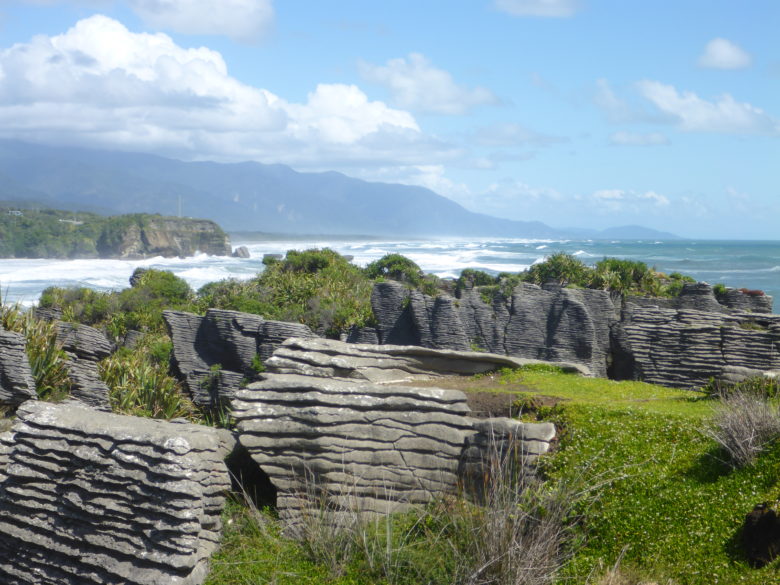To the Humming Forests of Nelson Lakes
Possums and hedgehogs and freedom campers are considered pests in New Zealand, the first two become road kill and the third litter the countryside with toilet paper and unburied poo rather than use the portaloos provided, the ranger at the office in the park told us. The media was making a big deal of the anti-social behaviour of a few culturally opposed visitors.
In the next few days hundreds of volunteers are going to bait traps strapped to tree trunks with poisoned chicken mince to kill as many of the wasps in the honeydew forest as possible. All to give the native species of birds and insects that used to feast on the honeydew drops a chance to recover in numbers after the devastation caused to their food supply by this dashing yellow and black striped interloper. “But the effect can only ever be cosmetic,” the ranger moaned, “There are millions out there and we cannot hope to reach them all. It’s mostly to protect visitors from getting stung and delay the extinction of native species.”
New Zealanders are a resourceful lot though. Devastating as these introduced species are to the ground dwelling and nesting native fauna, possum wool is mixed with sheep wool and angora to make some of the softest clothing items imaginable, and the cute little hedgehog image sells cushion covers for the tourism industry.
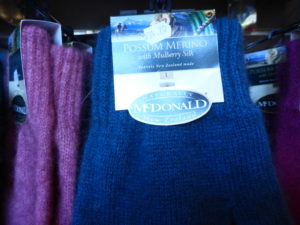
Soon after we had pitched our tent in a little square protected from the chill wind by a stand of kanuka trees and were sitting outside supping tea a little South Island robin, pale charcoal with a white chest, came to say “Hello, do you have any crumbs?”
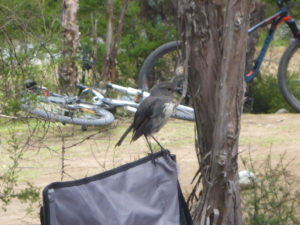
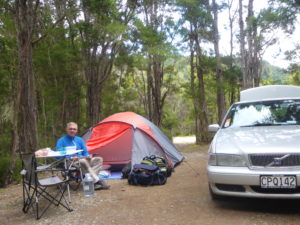
We reflected on the days travel, the many derelict timber mills, pretty modest farmhouses, the beautiful Arthur Range of mountains we would cross sometime soon and the quirky wooden sculpture of a cow celebrating the rich grasslands where lives have been lived out on the wealth of the land. Vicky (the Volvo) had been gradually ascending to this spot and the temperature had fallen in consequence to around 16’ in the day, so we wondered what the night would bring. Should we don pyjamas for the first time?
This was one of the best visitor centres for the display of the history of the region from the arrival of Maori tribes with their dogs and rats through their early co-existence with sealers and whalers to some of them, including a chief’s son named Kehu, who became guides for the explorers opening up the interior land for British and European settlers. There is a lovely wooden Maori carved statue of Kehu who became a hero to the European explorer, Thomas Brunner when the latter suffered a stroke on their expedition out of Nelson in 1846 and Kehu carried him all the way home. He has recently had a mountain named in his honour!
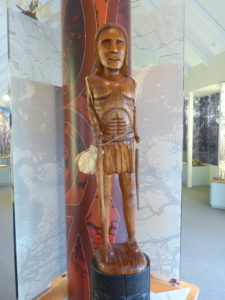
There are two big lakes in this reserve, Rotoiti and Rotoroa and we were camped at the head of Rotoiti, the smaller of the two with its two wooden pontoons inviting exploration.
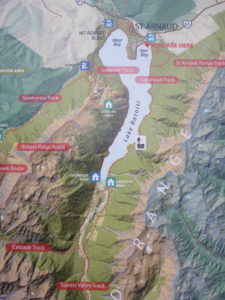
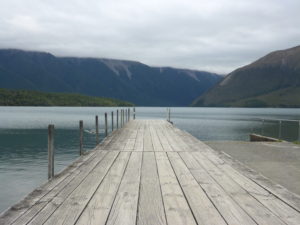
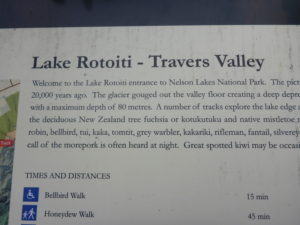
We took a boat ride to the far end and walked the shoreline back through the beautiful honeydew forest of native beech trees for which this region is known. The trees are tall, their barks black and their leaves tiny. Miniscule insects live under the skin of the trees and send a sticky sweet liquid down the longest anal gland in the world where it hangs at the end of this hair like protrusion in a crystal clear drop. It tastes sweet and the forest was alive with the humming of the immigrant wasps stealing the delicious food. We thought the blackened trunks had been caused by a forest fire, they certainly are dramatic.
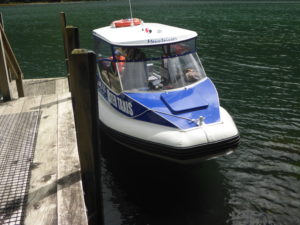
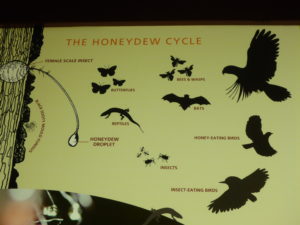
Our shoreside path was unlike the Abel Tasman one. Uneven and rocky, full with boggy patches and roots that could help and hinder the traveller. The mountains are made of soft, crumbly greywacke (a highly compressed sedimentary rock) which falls in avalanches down stream beds after heavy rain and freezing, icy conditions in
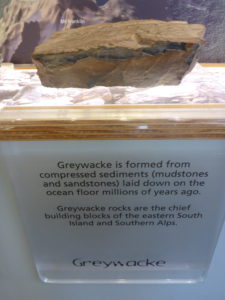 winter.
winter.
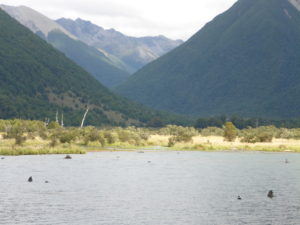
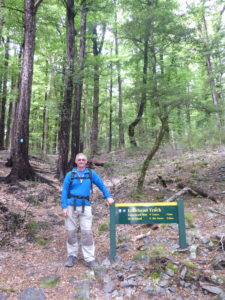
We struggled across rocks wobbling in the cascades of chilly stream water, my feet now soaking inside my useless sailing shoes and my socks rubbing holes in my feet. But the walk was enchanting. Sunlight filtered through gaps in the tree-cover and the lake glistened. We knew the forecast was for rain and wind the next day so we took the 11km walk as soon as we could on our arrival day.
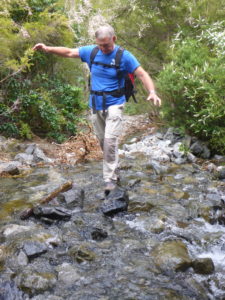
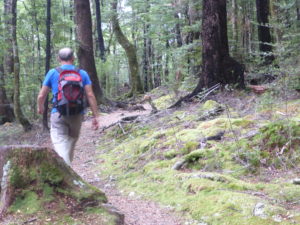

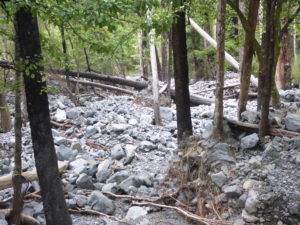

This is an area where visitors can take hikes out to overnight huts and spend three or four days exploring the terrain high up and in the wilderness. But we preferred our day or half days walks. For one thing we didn’t want to spend out on accommodation three times over per day. Mooring costs for Zoonie, plus a pitch for the tent plus a hut on a trek.
This area was once a weekend Riviera retreat for wealthy folk from Nelson, that we had already visited if you remember. They came down the Wairua Valley by car and stayed in hotels. Beach huts and boatsheds lined the now empty shoreline of the bays and today their descendants have their own second homes all around here and their boats sit on the driveways, waiting.
We stumbled upon a Classic Boat Museum full with lovely wooden boats and reflecting those heady days of carefree affluence and invention. We read with amazement the story of the son of a double barrelled surnamed aristocrat in England who blew the family fortune on women and in the gambling houses of Europe on his ‘grand tour’ only to more than recover it by inventing Babycham.
His father had built a Baby Champ, a 12 foot long speed boat that accompanied Donald Campbell on his fateful speed attempt on Coniston Water in Bluebird. It had a history of speed records itself and I remember it had a beautiful planked foredeck and was a remarkable machine. The son used it himself and it appeared in at least one James Bond Film. Well it lives here now and plays a part in their annual Classic Boat Rally on the water but was away when we visited. Maybe being used for another film.
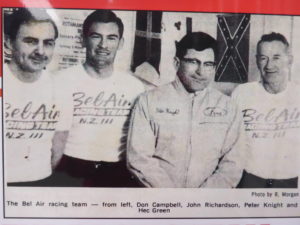
During the retreat from Dunkirk it was this wonderful little craft that brought top secret documents back to Winston Churchill. When engineers examined the wooden hull after the escape they found it was full of shrapnel.
Extraordinary what you find high up in the mountains in the middle of South Island New Zealand.
“We must do something romantic tomorrow, it being Valentine’s Day,” I said hopefully. Rob opened ‘Fifty Shades of Grey’ and started reading.
We were sitting in the car with its comfy soft leather seats, by the lake shore sipping coffee from our thermos and watching the weather change from sun to rain and back again. A spotlight of sunshine passed over the forest turning black to emerald as it flowed. Ducks were standing on rocks that protruded from the water, holding their wings open to warm in the sunlight. As soon as another shower arrived they dashed to the shelter of the bushes on the shore.
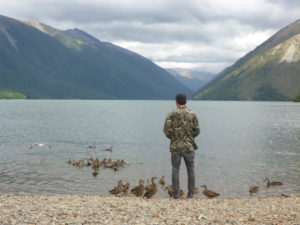
Next day we were back on the road following the diversion route as the Highway on the East coast is still closed in parts due to the recent earthquake that raised the land up to 7 metres above its normal elevation both on land and in the ocean. Sailing down that coast now the mariner has to reassess depths as the charts have been rendered inaccurate by a single, sudden geological event.
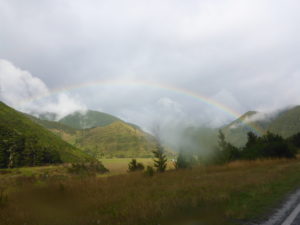

All Christchurch traffic has to come on this westerly mountainous route before it can turn east. So there are major road works, bridge widening to two way traffic, re-surfacing et al. Cheerful men and women spend their days turning the red Stop Sign around to read green Go Slow, smiling at motorists, having the occasional chat, smoking, stroking their dog in the car. One even sat in the car while holding the sign outside.
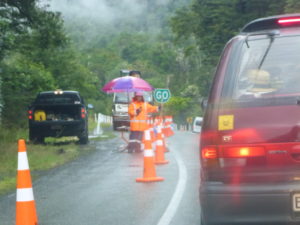
We were traveling alongside the mighty Buller River which was full and forceful after the recent plentiful rain. Rainbows graced the valley where spray caught the rays of sunshine and a thousand wisps of cloud escaped from the native forest like the smoke from tribal wood fires.
“There’s a deer farm over there dear.”
“Is there dear?”
“Yes deer, oh dear there’s a dead deer, dear.”
“Really dear, that’s a pity for the poor deer, dear,” sorry, but it was true and it would not be the only dead deer that day dears.
Travelling west long before us were the gold miners in NZ’s own gold rush of the late 1800s and many of the tracks now enjoyed by intrepid hikers pass through ghost towns just as I had seen in North America back in the 1970s. Coal, quartz and semi-precious stone mining followed and remnants of mines, chimneys and stone crushing machines litter the highways and fill the museums.
Rain brings to life many waterfalls that grace the hillsides and run as clear dark brown/black coffee coloured streams into the café au lait coloured Buller. Vicky is making her way down toward the west coast and the landscape is levelling to sheep grazing fields and flax hedges.
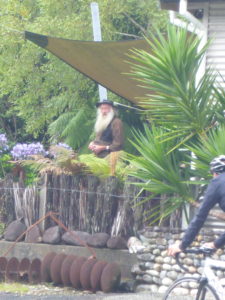
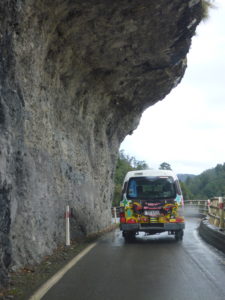
Captain Cook named Cape Foulwind in light of the weather he had there at the time of his sailing by; however the weather on the shore of the mighty Tasman Sea can be settled and beautiful. In Victorian times it was another Riviera but one has to be careful as the tide comes in rapidly over the rocks and can trap the unwary, just the same as in Cornwall, England.
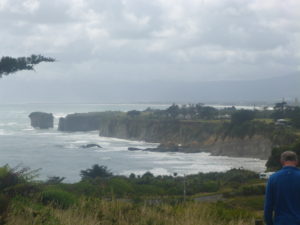
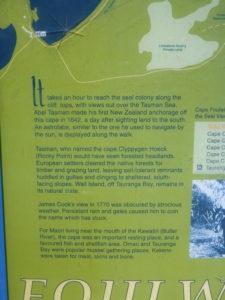
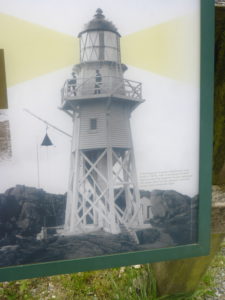
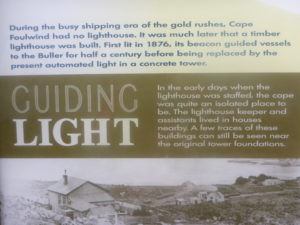
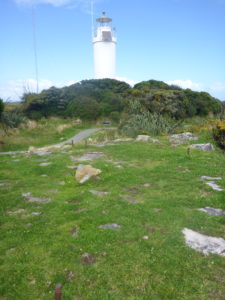
A little further down the coast we walked the short distance to an observation platform above a colony of snoozing, play fighting fur seals. Babies were suckling their mums and the air was pungent with their fishy aroma. I loved it. We could not interfere with them as the descent was rocky and dangerous and yet we were provided with a totally safe spot to view them living quite naturally below us.

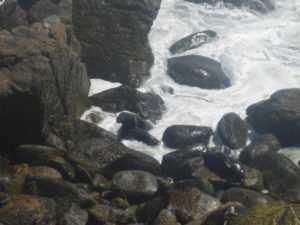
The Tasman waves, after their long journey from the Antarctic waters, settled in white wavecrests for a distance of half a mile or so onto the shoreline. Their dying mist hovered above the beaches that were growing their own forest of deadwood and tree trunks.
At Punakaiki, as we viewed the striking layered pancake rocks, we met by chance the American family from a yacht named Enough, a pretty double ender with green covers. Remember we had been moored next to her in Vavau and it was nice to have a few minutes catch up before we continued on the undulating path around the latest natural phenomena.
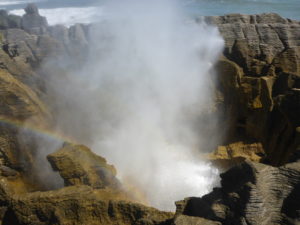
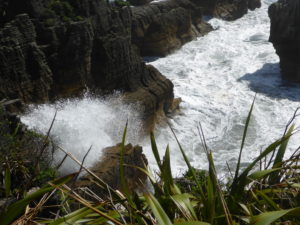

With nothing to stop her the Tasman Sea was roaring, a wonderful wild and uncontainable sound. In Greymouth we pitched our tent with just flax bushes and a pathway between us and the beach and we had to wear earplugs at night as the noise was so beautifully loud.
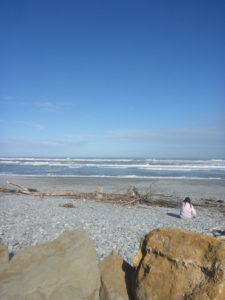
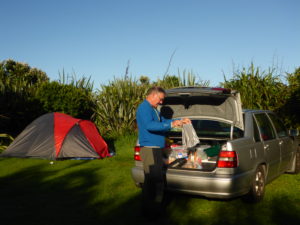
In the falling light after sunset on our first evening there we walked a short distance along this wild shoreline and found a young female deer caught up amongst the branches of a tree. Maybe she had fallen into the raging river after the recent rains and been carried ashore by the sea. The last dead deer of the day.
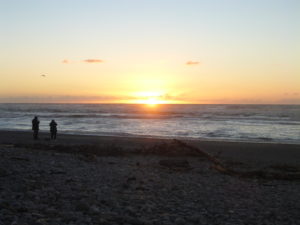
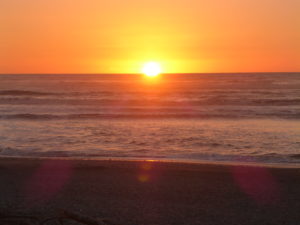
A walk along the beach took us to all that remains of one shipwreck, the Lauderdale.
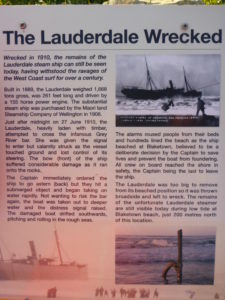
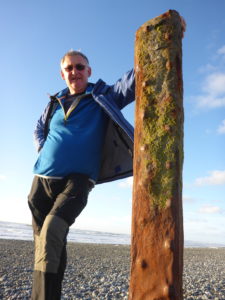
Greymouth’s deadly bar contrasts with Monteith Brewery’s friendly bar.
The ports of Greymouth and further south, Hokitika, were once thriving ports, bringing firstly sealers then whalers to the region. Soon settlers followed and hopeful gold prospectors in the rush to the rivers full with gold the Maoris thought insignificant compared to their treasure, pounamu or greenstone (jade to us) which is found only in the South island.
Exports from these square rigger lined wharves included coal and masses of timber, farm produce, whaling products and gold. Two great harbour walls were built to either side of the Greymouth River, the longest on the south side and called the Blaketown Breakwater.
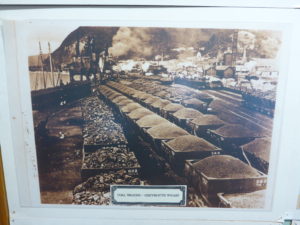
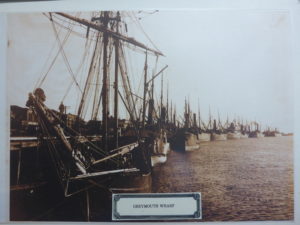
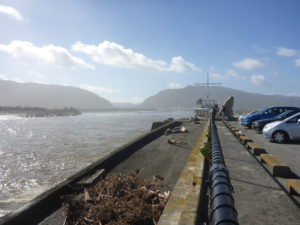
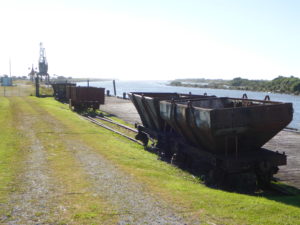

We parked Vicky near to the end where Richard, a French Canadian was busy making delicious coffee and waffles in his ex-dredger’s lifeboat, itself sitting on a substantial road trailer hitched onto his Landrover.

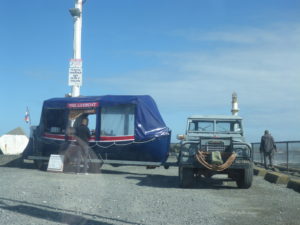
As he prepared our coffee and tended the waffles he told us he once lived on a 32 footer and longed to sail into the blue like us. But his wife was not of the same mind. For some reason he has raised his family by himself and they have just left home so he recently bought the lifeboat, fitted a canopy over the top, turned the old rowlocks into cup holders and installed a little waffle maker.
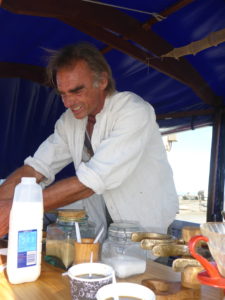
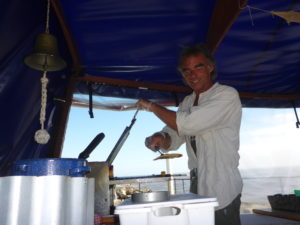
The waffles were very thin, spread lovingly with a mixture of golden syrup, maple syrup and cinnamon and then topped with another waffle making a mouth-watering sweet sandwich.
Some other folk were tentatively walking towards the little café, “You must try these,” I said “They are delicious”. The lady’s sister was visiting from England and they took my advice. Rob and I wandered across to the railing and watched the power battle between the tide emptying from the river and the massive Tasman rollers powering in against them. Just off the entrance is an extensive sand bar and the turbulence of water over the shallow bar creates a liquid confusion against which even powerful engines have no control.
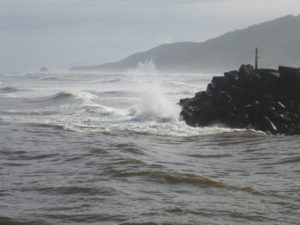
Plaques mentioned by name and date the plight of numerous fishermen and sailors who have struggled against the elements to enter and leave the river mouth and lost their lives. Ironically it was the crew and passengers on the old tall rigged sailing ships who had a greater chance of survival than the short- handed crew on modern fishing boats. The graceful sailing ships would be thrust onto the northern breakwater rocks with a violent south west wind up their tail. Lines would be shot into the rigging by rocket and the crew could be ferried ashore in baskets.
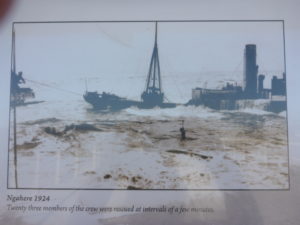
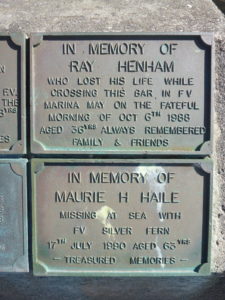
Whereas with small modern fishing boats crewed by just two or three their little vessels would be spun and flipped by the turbulent waters, bottom out on the bar and break up with people watching from the safety of the breakwaters unable to do a thing to help them. The big ships and most of the fishing fleet are now long gone. The wharf-side is empty and the cranes are rusting memories of past trading wealth.
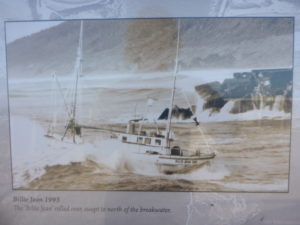
Greymouth’s past is well documented but her future is less certain. We struck a goldmine of information in the Old Commercial Chambers Photographic Museum. Many rooms filled with records, exhibits, films, but most especially photographs. Being a recent invention back then photography has born witness to the birth of New Zealand as a nation of immigrants with their hopes and dreams of a new life.
The photo that stands out in my mind was of the old dredger, built on the Clyde in 1908, working in the Grey River here. Clearly to be seen on its chocks on the starboard side of the dredger was Richard’s lifeboat, now high and dry at the end of the breakwater enjoying a new lease of life.
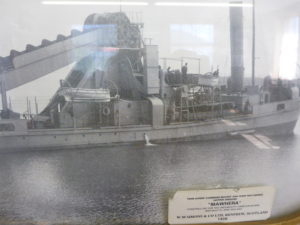
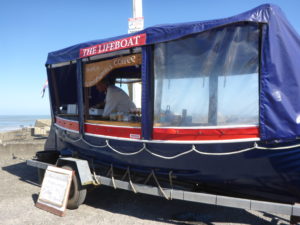
Our stay in Greymouth also featured a tour around Monteith’s Brewery. A few years ago they had the choice of expand or close or get crafty. So the family owners went in to craft brewing, following the global trend of choice local beers. They are now so successful they have to get a national big brewery, DB Beers, to do a lot of their brewing for them. It was a teeth on experience as we crunched our way through different types of grain and chewed on a hop pellet grown and processed in the hop fields of Nelson where the baby doll sheep keep the fields clean. Our guide had a nice sense of humour and sussed out who to use as the brunt of various jokes without becoming offended, me.
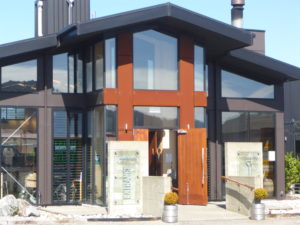

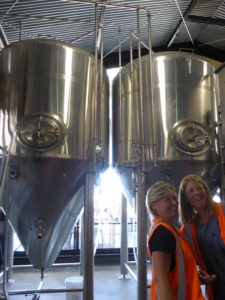
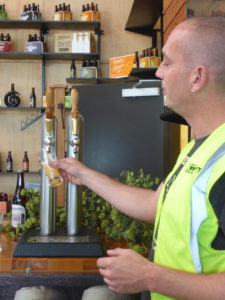
After the tour we munched on beer battered chips and supped our free samples with a couple of Head teachers from Basingstoke who have resigned their jobs for a year and are touring the world by plane and car.
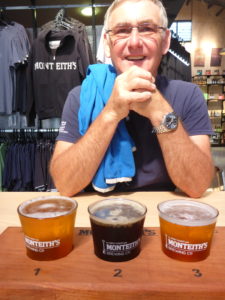
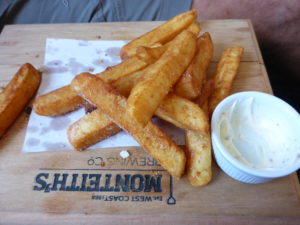
I liked Greymouth, its rich history and challenging future, the determined efforts of the locals to survive in a harsh environment not far removed from the recent frontier struggles of their ancestors.
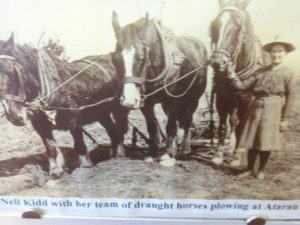
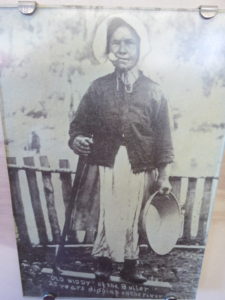
Vicky Bleeds across Arthur’s Pass
The weather continued to be bright and warm in the day and we set off across the South Island towards Christchurch alongside the railway line that takes the trans-Alpine train through some of the wildest most beautiful scenery in the world. But not on this day or for a while to come as a forest fire had damaged the track and for safety the train was sitting in its tunnel underneath the road that travels over Arthur’s Pass. We paused at the Brunner Mine lookout and gazed across the river at what is left of the mine after the disaster that claimed 67 lives as a result of careless cost cutting and greed.
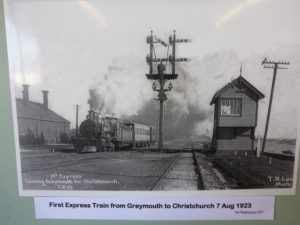
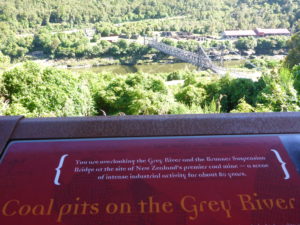
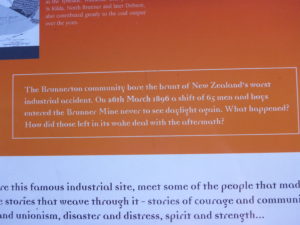
The Stillwater Route travels up the Arnold Valley Road from Westlands District. Wineyards and fir plantations, sheep and native bush up to the top of the mountains. As we ascended snow topped mountains appeared peaking around others and nudging the clear blue sky.
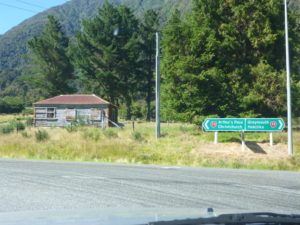
We left behind vast dairy herds on the flat lake-district to climb through the steep Otira Gorge, Vicky seemingly making easy work of it. The sheer drops around us were interesting and the engineering workmanship amazed us. On one section of vertical mountain face a cantilever bridge had been built for the road with massive rods screwed into the solid rock and just beyond it a chute was constructed to divert a waterfall above and over the road. Not much further on we crossed a long concrete viaduct as a double trailer straw bale lorry came down hill towards us at no more than 10mph using a combination of brakes and retarders to control its massive weight on the steep descent.
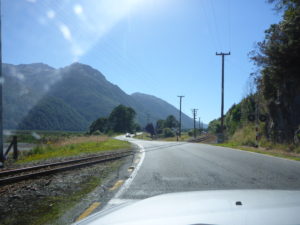
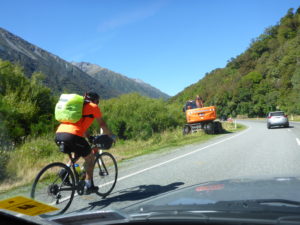
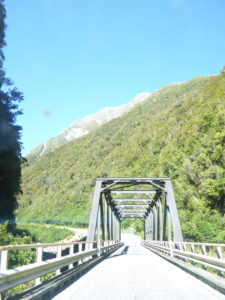
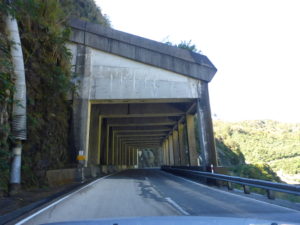
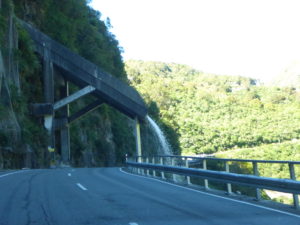
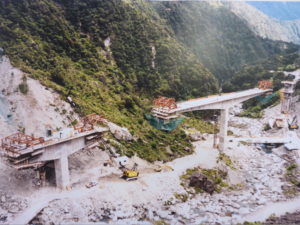
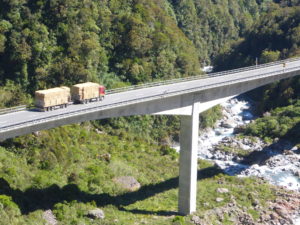
We turned Vicky into the car park for a well-earned break. Her fan was working hard to cool the engine and Rob was in a spin because smoke was rising from underneath her and the smell of burning oil filled the air. I reasoned we couldn’t do much until she had cooled down so I wandered across to where a group of people were gazing off into the distance at a flock of native green parrots that live along the treeline, Keas. They are too friendly for their own good and are endangered. Tiny model cars and lorries were struggling up and down the viaduct and the air was cool, away from Vicky.
Suddenly a kea flew over our heads, the orange feathers under the wings showing clearly and it settled on the ground just the other side of the railing giving us great photo opportunities. They have a long upper beak curving down over the lower one and ending in a sharp point.
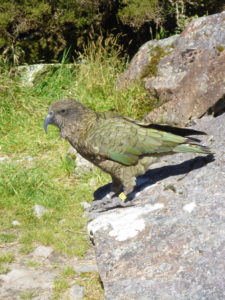
What is it that makes people want to feed wild animals with inappropriate food, encouraging them into danger and mischief? They are so cheeky they will tear rubber trim off cars and steal food from people’s hands if they get a chance and unwary folk encourage them.
I dipped Vicky’s engine oil to find we had left most of it on the road behind us. We were so glad we bought the 5 litres of oil back along. We topped her up and slid gently down towards Christchurch, me looking on the road map for the AA office where we could use our membership to get a garage referral and arrange for a service, which was now due and hopefully a repair.
My goodness what a contrast in climate on the east side of the Pass. Down off the Torlesse Range onto level land and very straight roads; the farmland was dry and brown, long spindly arches of metal, wheeled irrigators moving slowly across fields giving the only green to the scenery. Fields where thoroughbred horses and stud sheep grazed were a hint of the wealth of this area.
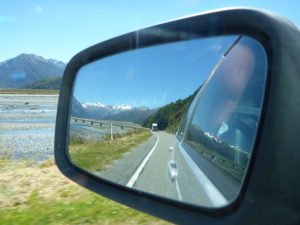
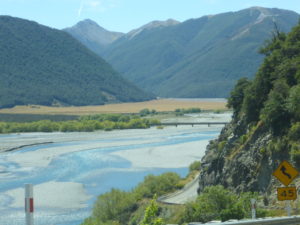
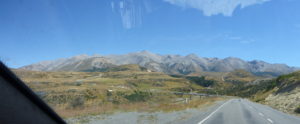
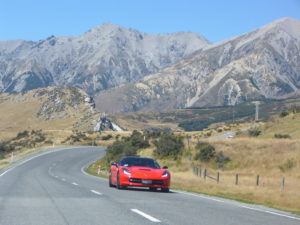

The young blonde lass at the AA took a risk and referred us blind to the Matipo Garage in Lowe Street Christchurch and the boss with an eastern European accent booked Vicky in for the morrow. We settled into our Kiwi rose garden campsite and planned the next day. From the thundering Tasman at Greymouth to racing car engines and a snuffling, grunting hedgehog during the night, it had been a long day.
